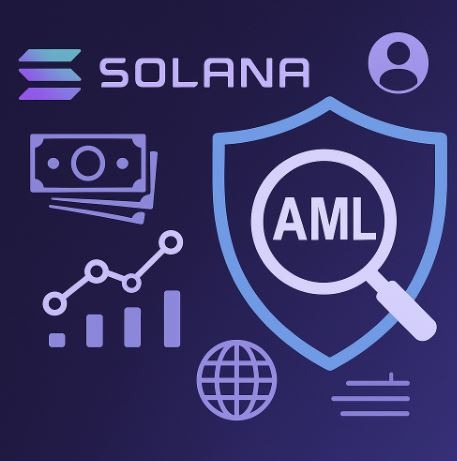Solana’s AML Tools: Balancing Speed, Transparency, and Compliance
📰 Solana Swiss News & Insights | August 15, 2025 By Gabriel Stern – Senior Reporter
8/15/20253 min read


📰 Solana Swiss News & Insights | August 15, 2025
By Gabriel Stern – Senior Reporter
As the digital asset market matures, blockchains once praised for their decentralization are now under scrutiny for their role in facilitating illicit finance. Solana, renowned for its speed and scalability, has emerged as both a driver of crypto adoption and a focus of regulatory attention. To address concerns over money laundering and terrorism financing, new anti-money laundering (AML) tools are being deployed across the Solana ecosystem — tools that may redefine how compliance works on high-performance blockchains.


The Growing Compliance Imperative
Global regulators, from the U.S. Treasury to the Financial Action Task Force (FATF), have consistently flagged cryptocurrencies as vulnerable to misuse by money launderers and extremist groups. Public blockchains, despite their transparency, are often misperceived as anonymous havens. In practice, however, advanced analytics can reveal patterns that point to illicit behavior.
For Solana, the adoption of AML tools is more than a regulatory box-ticking exercise. With its throughput exceeding 65,000 transactions per second, the chain is increasingly attractive to institutions exploring tokenized securities, stablecoins, and digital payments. For these players, compliance is non-negotiable.
How the Tools Work
AML solutions on Solana, often provided by blockchain intelligence firms such as Chainalysis, TRM Labs, and Elliptic, operate by scanning the ledger in real time. They:
Identify suspicious wallets linked to darknet markets, ransomware campaigns, or sanctioned entities.
Cluster addresses to uncover hidden connections between seemingly unrelated accounts.
Score risks dynamically, flagging transactions for further review before they reach exchanges or custodians.
Because of Solana’s speed, these systems can operate at near-institutional grade, offering continuous monitoring without slowing down the network. They are also integrated with centralized players such as exchanges, who can freeze or report flagged assets.
Cutting Off Terrorism Financing
One of the most significant applications of these tools is counter-terrorism financing (CTF). Unlike large-scale laundering, terrorism financing often occurs in smaller, fragmented amounts designed to slip under the radar. By analyzing transaction behaviors, AML platforms can detect anomalies, such as sudden spikes in small transfers or repeated routing through mixers.
Recent reports by the U.S. Treasury have linked extremist groups to the use of crypto fundraising. With AML systems in place, Solana-based assets are less likely to be misused for such purposes, strengthening the chain’s global credibility.


Benefits and Criticisms
For investors and institutions, these developments are a welcome sign. Effective compliance fosters trust, reduces reputational risk, and opens the door for deeper institutional involvement. Solana’s alignment with AML standards positions it as a blockchain fit for mainstream adoption.
Yet, the shift is not without critics. Privacy advocates argue that continuous surveillance undermines the pseudonymous nature of blockchains. There is also the danger of “over-compliance,” where legitimate activity is frozen simply due to conservative risk models. The challenge for Solana and its partners is to balance transparency with financial freedom.
A New Era of On-Chain Compliance
As regulatory frameworks like the EU’s MiCA and the FATF travel rule take effect, every major blockchain will need to embed compliance into its DNA. Solana’s embrace of AML tooling shows that speed and openness need not come at the expense of oversight.
The bigger picture is clear: blockchains are moving from the financial fringes to the financial mainstream. In that transition, tools that prevent laundering and terror financing are not optional — they are the foundation of long-term trust.
Insights
Timely updates on Solana blockchain developments and news.
News
Blog
solana email
© Solana Swiss News 2025. All rights reserved.
ti
info@solana-swiss.news
